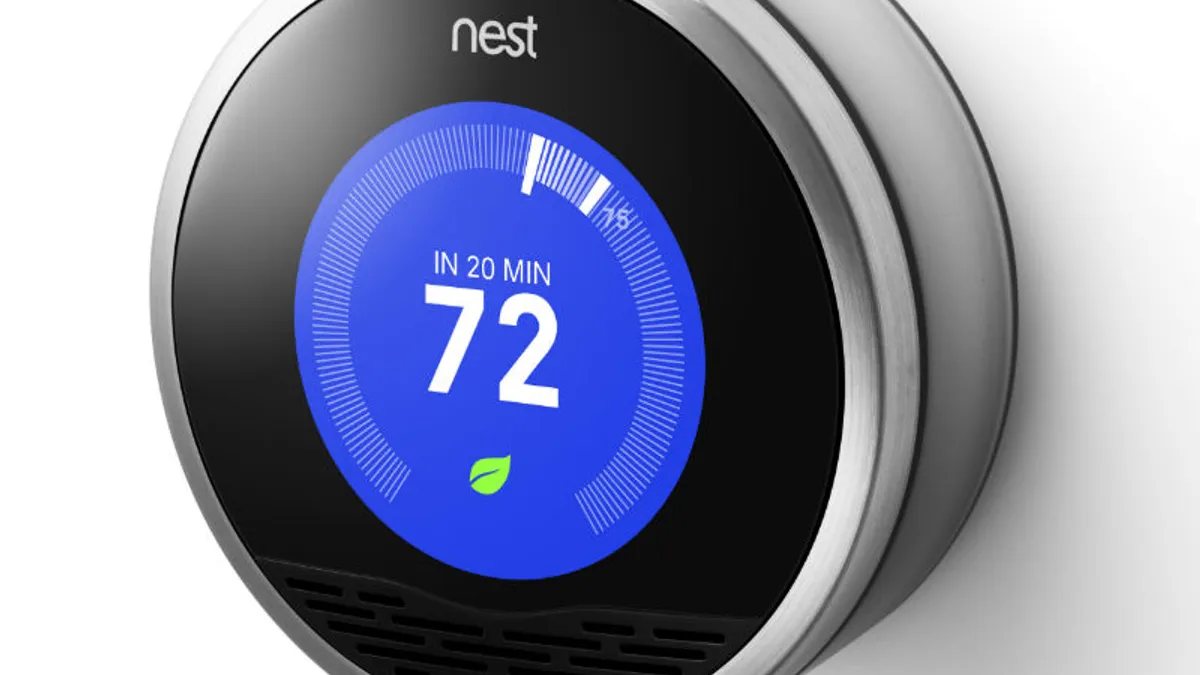Dive Brief:
- The Nest Learning Thermostat can save U.S. customers more than 10% on their heating bills and about 15% on cooling, according to new data released by the developers of the energy management device.
- In terms of energy savings, the thermostat reduced residential energy usage by about 17.5% — or about 585 kWh per year — according to a white paper released by Nest's developers. With average savings of more than $130 per year, the Nest thermostat pays for itself in less than two years, the company says.
- Wired reports that two other groups — the Energy Trust of Oregon and Indiana-based Vectren — independently verified the results.
Dive Insight:
Google, which spent $3.2 billion to buy Nest early in 2014, loves its data. And over the last two years Nest has been collecting data on energy savings, and says it now has proof that the home thermostat — which is not programmable but learns about a household's energy usage patterns over time — can save consumers significant money.
The numbers may be especially useful to utilities interested in smart thermostat programs. The decision on whether to invest in a certain thermostat is markedly easier for planners when concrete energy usage numbers are available.
For consumers, the Nest thermostat saved U.S. customers about 10% to 12% on their heating bills and about 15% on their cooling bills, which the company said means annual savings of $131 to $145. While the U.S. Environmental Protection Agency has said programmable thermostats can save up to 20%, Nest's developers said that "in real homes, the numbers just didn’t add up."
"To get to 20%, they usually use a model that looks at how much a well-programmed thermostat could save versus a thermostat that’s left at the same temperature literally all the time, day or night. ... Most people don’t program their thermostats – they’re too complicated."
The Nest thermostat, which developers say they have updated more than 30 times in the last three years, is not programmable. It is a "learning thermostat," the company said. "Instead of asking you to set a schedule, Nest creates one for you based on your daily routine and what temperature you like."
In addition to energy savings, the one study noted that the majority of participants reported feeling more comfortable after the Nest Learning Thermostat was installed.
The data comes from two independently funded studies and a third study was performed by Nest using a national sample of Nest customers across 41 states in the U.S. who had also enrolled in Nest’s MyEnergy service.











